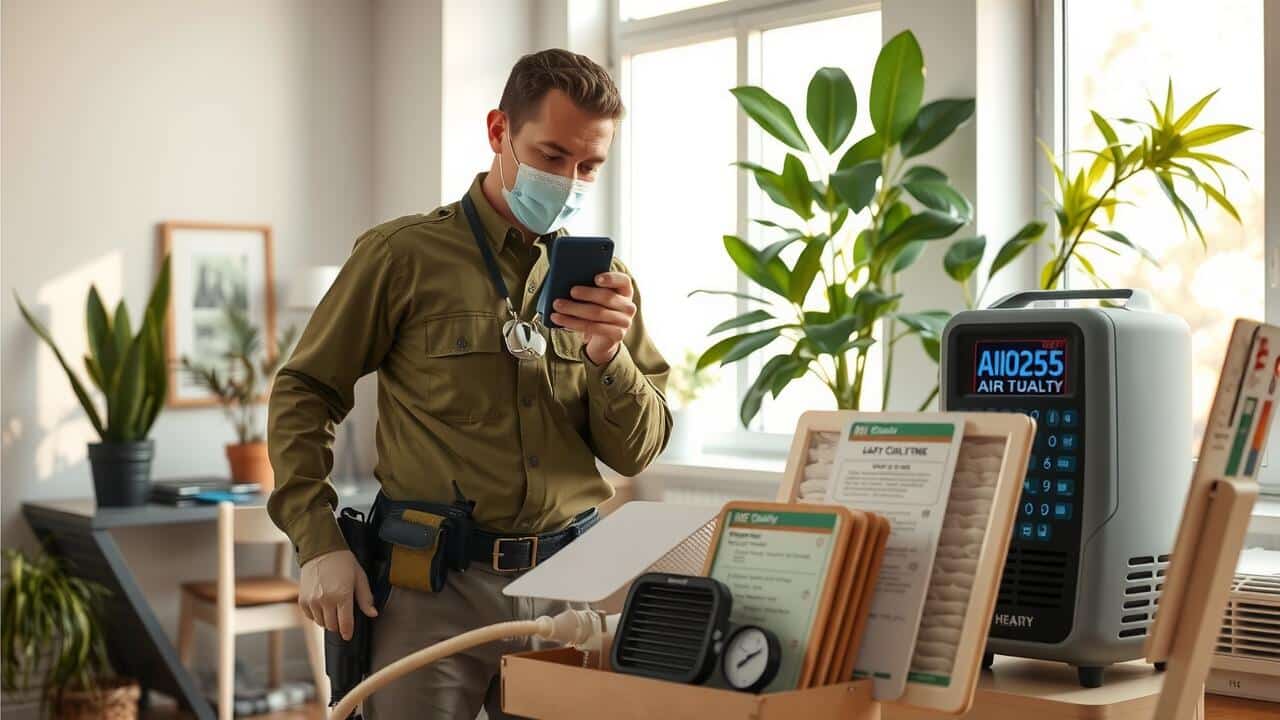
Table Of Contents
Houseplants for Air Quality Improvement
Houseplants serve as natural air purifiers, significantly contributing to Indoor Air Quality Improvement in homes and offices. They absorb carbon dioxide and release oxygen, creating a healthier atmosphere. Certain plants also have the ability to filter out common indoor pollutants like formaldehyde, benzene, and trichloroethylene. This reduces the overall presence of harmful chemicals and enhances the overall air quality in indoor spaces.
Incorporating a variety of houseplants can amplify the benefits for air quality. Popular choices like snake plants, peace lilies, and spider plants are well-regarded for their purifying capabilities. By strategically placing these plants throughout living and working environments, it’s possible to create a more refreshing and breathable atmosphere. Regular care and maintenance of these plants ensure they thrive, maximizing their effectiveness in Indoor Air Quality Improvement in any setting.
Best Plants for Enhancing Indoor Air
Certain houseplants are renowned for their ability to purify the air and enhance indoor air quality. In particular, the snake plant, spider plant, and peace lily are popular choices among homeowners. These plants not only bring greenery into the living space but also filter toxins such as formaldehyde and benzene. Their low maintenance requirements make them ideal for individuals who may not have a green thumb. Incorporating these plants into home decor can significantly contribute to indoor air quality improvement.
Additionally, some varieties like the Boston fern and bamboo palm excel at increasing humidity levels while neutralizing pollutants. A well-placed rubber plant can also thrive indoors, further aiding in removing airborne toxins. Strategically positioning these plants throughout the home can create a more inviting atmosphere while simultaneously promoting healthier air. The beauty of these options lies in their dual purpose: they enhance aesthetics and foster a proactive approach to indoor air quality improvement.
Importance of Regular Cleaning
Regular cleaning plays a crucial role in enhancing indoor air quality. Dust, allergens, and pollutants tend to accumulate in homes over time. Without consistent cleaning, these particles can degrade the air people breathe, leading to health issues such as allergies and respiratory problems. Indoor air quality improvement in living spaces greatly relies on the removal of these contaminants through effective cleaning routines.
Incorporating thorough cleaning practices into daily life helps maintain a healthier environment. Vacuuming carpets and upholstery can eliminate dust mites and pollen, while regular dusting prevents buildup on surfaces. Additionally, paying attention to areas that often go unnoticed, such as vents and behind furniture, contributes significantly to indoor air quality improvement in homes. By fostering a consistent cleaning regimen, individuals not only enhance their surroundings but also promote overall well-being.
Cleaning Practices to Reduce Pollutants
Regular cleaning is essential for Indoor Air Quality Improvement in any home or workspace. Dust and allergens accumulate quickly on surfaces, so frequent dusting and vacuuming can significantly reduce these irritants. Using a vacuum with a HEPA filter ensures that fine particles are trapped, preventing them from being released back into the air. Additionally, cleaning textiles such as curtains, rugs, and upholstery can diminish the presence of dust mites and other allergens.
Incorporating natural cleaning products can also enhance indoor air quality. Many conventional cleaners emit harmful volatile organic compounds (VOCs) that contribute to indoor air pollution. Opting for eco-friendly alternatives can reduce these chemicals while still maintaining cleanliness. Regularly washing bedding, and disinfecting high-touch areas can further contribute to a healthier indoor environment, making a positive impact on overall air quality.
Humidity Control for Better Air Quality
Maintaining appropriate humidity levels is essential for Indoor Air Quality Improvement in residential spaces. Humidity refers to the amount of moisture present in the air. When humidity is too low, it can lead to dryness in the respiratory system, skin irritations, and increased susceptibility to illnesses. Conversely, high humidity levels can foster mold growth and dust mites, contributing to poor air quality and potential health issues.
To achieve optimal humidity levels, the ideal range is generally between 30% and 50%. Using dehumidifiers can help in areas prone to excess moisture, particularly basements. On the other hand, humidifiers can be beneficial in dry climates or during winter months when heating systems can decrease indoor moisture levels. Regular monitoring with a hygrometer allows homeowners to make necessary adjustments and ensures that indoor air quality remains healthy and comfortable.
Effects of Humidity on Air Quality
Humidity levels play a crucial role in determining indoor air quality. When humidity is too high, it can lead to the growth of mold and mildew. These fungi release spores into the air, which aggravate respiratory issues and other health concerns. Conversely, low humidity can dry out the respiratory tract, causing discomfort and increasing susceptibility to infections. Maintaining a balanced humidity level is essential for promoting a healthier living environment.
Controlling humidity enhances indoor air quality improvement in various ways. Optimal humidity levels, usually between 30% and 50%, help minimize the presence of dust mites and bacteria that thrive in specific moisture conditions. This balance contributes not only to a more comfortable atmosphere but also to the reduction of allergens. By effectively managing humidity, individuals can create a more pleasant indoor space while safeguarding their health.
FAQS
What are the best houseplants for improving indoor air quality?
Some of the best houseplants for enhancing indoor air quality include Spider Plants, Snake Plants, Peace Lilies, and Boston Ferns. These plants are known for their ability to filter common indoor pollutants.
How often should I clean my home to maintain good indoor air quality?
It is recommended to clean your home at least once a week to minimize dust, allergens, and other pollutants. Regular cleaning helps maintain a healthier indoor environment.
How does humidity affect indoor air quality?
High humidity levels can lead to mold growth and dust mites, while low humidity can cause dryness and irritation in the airways. Maintaining a humidity level between 30% and 50% can help improve indoor air quality.
What cleaning practices can reduce indoor air pollutants?
Effective cleaning practices include using a vacuum with a HEPA filter, dusting surfaces regularly, washing bedding weekly, and using non-toxic cleaning supplies to minimize chemical exposure.
Are air purifiers effective in improving indoor air quality?
Yes, air purifiers can be very effective in improving indoor air quality by removing airborne particles, allergens, and pollutants. Choosing a model with a HEPA filter can enhance its effectiveness.


